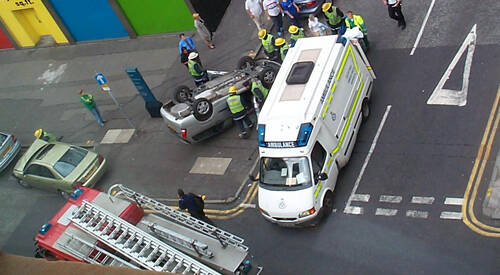Councils have been working closely with emergency services, government agencies and the voluntary and community sector to cope with the prolonged extreme weather.
Managing the flood event is a significant challenge and requires access to property level information; not just the spatial location of individual properties but also the type of properties at risk, and whether there are any specific threats at individual properties that could cause pollution such as paint shops.
Each council maintains a local land and property gazetteer (LLPG) which holds information on every residential, business and social dwelling within its administrative area, including coordinates and what type of property it is; residential, in block of flats or commercial.
During the flooding incident in Hull in 2007, using its LLPG, Hull Council were able to quickly map the location of all flood related service requests received through the council's centralised call centre. With a direct feed from the CRM application to both an Intranet and Internet based mapping application, a real time picture of the unfolding flood event was available for the emergency response teams and residents of the city.
The council was able to directly link service requests from residents and council staff, such as emergency evacuations, requests for sand bags and reports of damaged manhole covers or blocked drains, directly to an existing web based mapping tool powered by the LLPG. This also became the building block for the management of service delivery during the following months. Requests from residents for post flood services, such as removal of damaged goods, were mapped and analysed, enabling the council to prioritise requests and effectively manage the clean-up operation.
Back in 2008, Nottingham City Council used its LLPG to mitigate flood risk around the river Leen and unlock information from other back office systems to make it available to inform real decision making. The LLPG was able to identify more than 70 additional properties to reach a total of 696 that were at potential risk of flooding. The unique property reference number associated with each record were used to draw information from other back office systems such as non-domestic rates to identify whether the property was commercial or residential; which were council owned and whether large employers were in the area. The data also revealed vulnerable sites such as hospitals, health centres, critical buildings and non-postal properties such as electricity sub stations, tram stops, gas meter houses, car parks and playgrounds.
The project was not only able to more accurately identify the areas subject to potential risk of flooding but also greatly improve the understanding of the likely impact on citizens, public and commercial enterprises and the infrastructure.



